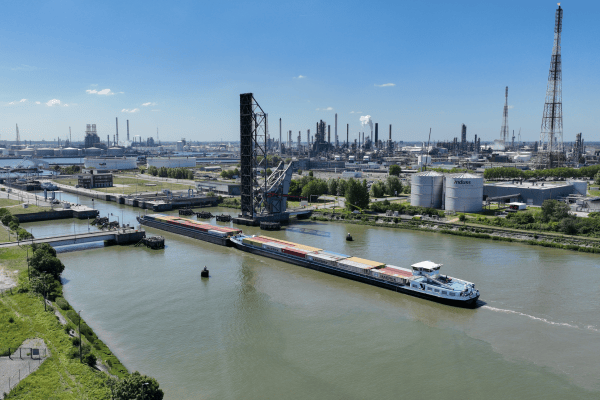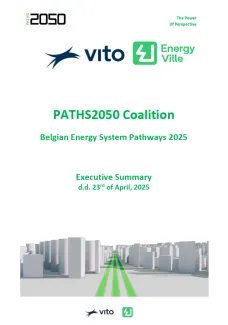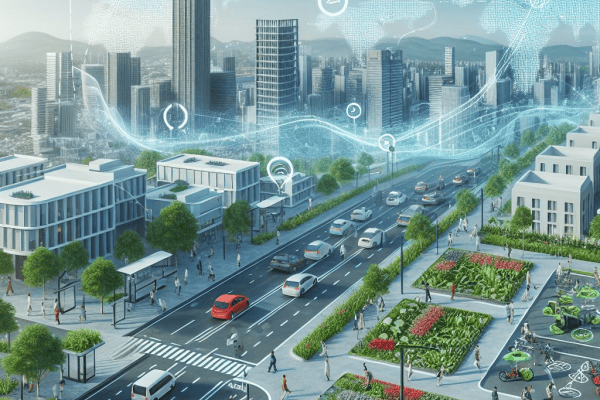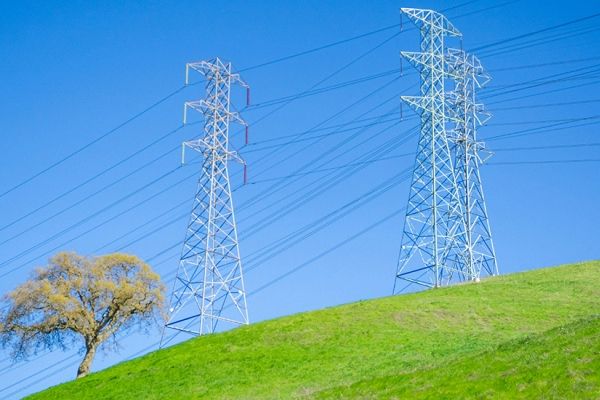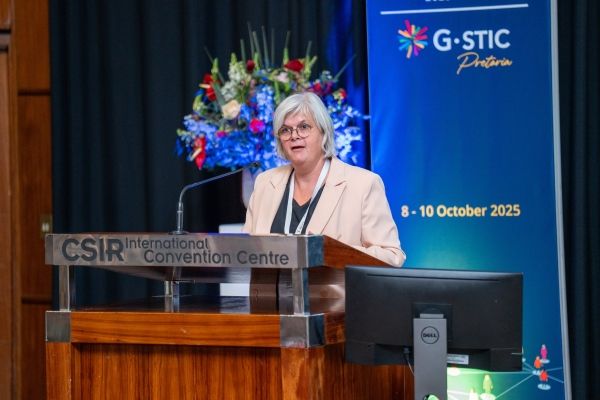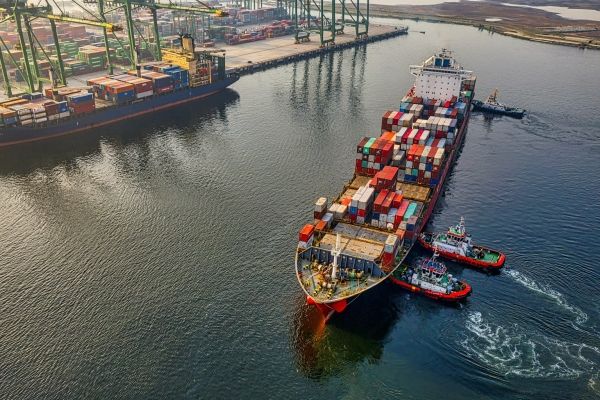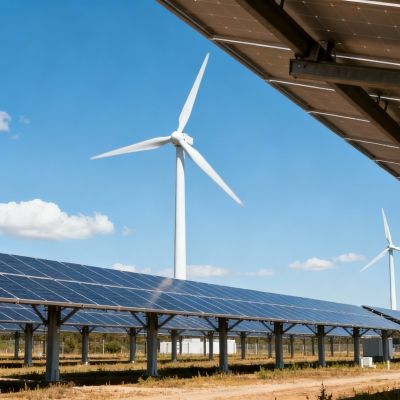A compass for a climate-neutral and economically strong Belgium
VITO at EnergyVille leads coalition with ArcelorMittal, BASF, Elia, Fluxys and Luminus to launch strategic roadmaps. PATHS2050 Coalition shows which policy choices and investments are needed.

Brussels, 23 April 2025 – How Belgium can become climate-neutral by 2050 while maintaining industrial resilience, is one of the most profound societal and economic challenges of the century. VITO, partner in EnergyVille, has therefore joined forces with ArcelorMittal, BASF, Elia, Fluxys and Luminus – key players in the Belgian energy system – within the newly established PATHS2050 Coalition to jointly outline possible pathways that can serve as a compass for policymakers and industry to navigate this complex and urgent transition.
This compass takes the shape and form of a new PATHS2050 study, consisting of three feasible and cost-efficient roadmaps that not only result in climate gains, but also keep our Belgian industry resilient. The newly-presented routes differ in their reliance on wind energy, sustainable molecules, Small Modular Reactors (SMRs) and carbon capture in industry. They show in which ways Belgium could realise the energy transition, while at the same time offering sufficient perspective in a constantly changing world.
With this new model study, VITO at EnergyVille and the newly founded PATHS2050 Coalition build on the analytical PATHS2050 Platform, which EnergyVille initially launched in 2022 to examine the then most cost-efficient pathways to a climate-neutral Belgium. Since then – due to geopolitical uncertainties, volatile energy prices and delays in renewable energy projects – the challenges we are collectively facing have only grown.
“Several key Belgian players from diverse industrial backgrounds have joined forces to jointly develop calculated pathways. This collaborative approach is essential to achieve the climate targets by 2050 and to maintain the resilience of our industry,” says Pieter Lodewijks, Energy Expert and Programme Manager at VITO/EnergyVille.
The new PATHS2050 study provides updated scenarios that are technologically feasible and take into account changing economic parameters. The analysis is entirely data-driven and applies a cross-sectoral and increasing CO₂ price, in line with the objectives of the European Union and its member states. This gives policymakers and industrial players insights into possible and necessary steps that can already be taken today to achieve climate goals, as well as ensure economic resilience in line with the European Clean Industrial Deal.
Important to consider: this new PATHS2050 study presents scenarios, not predictions of the future. The results offer possible roadmaps with steps towards climate neutrality, based on the most recent data and model analyses for Belgium. The scenarios indicate the impact of different policy choices and investments on the energy system, but actual developments may differ due to technological, economic and policy-related changes.
Three routes to climate neutrality are analysed, with electricity as the main energy carrier, complemented by sustainable molecules and carbon capture and storage
The new PATHS2050 study elaborates on the findings of the initial PATHS2050 study from 2022 and identifies three newly-aligned routes to make Belgium climate-neutral by 2050 while maintaining current industrial output. All scenarios provide sufficient energy for the economy and industry, but differ in the deployment of wind and nuclear energy, sustainable molecules and carbon storage in industry.
ROTORS Scenario: Under this scenario, the model allows for maximum use of wind energy, both onshore, in the Belgian North Sea and further offshore. Gas-fired power plants remain necessary, can already run on biomethane today, but in the future can switch to (synthetic) fuels such as e-methane, and hydrogen and derivatives. Small Modular Reactors (SMRs) contribute to a limited extent from 2045 onwards. The model further allows for a maximum storage of 10 million tonnes of CO2 per year – about 10 percent of Belgium’s current total emissions, or nearly 40 percent of industrial emissions.
REACTORS Scenario: Under this scenario, the model only allows for limited wind energy due to permit issues, albeit complemented by one large new nuclear reactor from 2040 onwards and Small Modular Reactors (SMRs) from 2045 onwards. Industry enjoys unlimited access to carbon storage.
IMPORTS Scenario: Under this scenario, the model allows for limited wind energy, no extension of Doel 4 and Tihange 3 and no new nuclear development. Instead, under this scenario the energy system relies on imports of electricity and sustainable molecules. Industry has unlimited access to carbon storage.
Under all three scenarios, electrification reduces total energy consumption by a third by 2050 – down to 250 TWh – while electricity demand at least doubles to 155 TWh, and this due to the electrification of heating and cooling in buildings, road transport and industry.
To meet this increasing demand for electricity, substantial investments in wind energy and electricity infrastructure are necessary under all three scenarios. In addition, the development of a CO2 network for the transport of captured CO2 emissions will be required, and a strategy must be developed for the import or production of low-carbon molecules – especially for international shipping and aviation, industry and electricity production.
Regardless of the chosen scenario, the following actions are necessary:
Recommended actions between today and 2030

- Accelerated electrification of road transport and heating systems for buildings through an increase in the roll-out of electric vehicles and heat pumps, combined with a strong acceleration of the renovation of our buildings.
- Rapid development of wind and solar energy.
- No new installations of fossil heating systems in buildings. Where relevant, expansion of district heating networks. The use of natural gas in industry remains dominant.
- Investments in new gas-fired power plants to support electricity production.
- A clear policy framework for CO2 storage projects such as Kairos@C, Go4Zero, H2BE (blue hydrogen) and others to facilitate an up-scale by 2040. Start building a CO2 backbone.
- A clear policy framework for hydrogen (H₂), based on technological neutrality. The framework must not only define the conditions, but also provide market certainty by clarifying potential consumers of hydrogen.
- If the choice is made to introduce new nuclear energy to be operational by 2040–2045, a strategic plan must be set up as soon as possible with clear agreements on investments, responsibilities for both the private and public sector, permits and locations.
Recommended actions between 2030 and 2040

- At least 50 percent of non-residential buildings and 80 percent of residential buildings to be heated with heat pumps, where relevant combined with district heating. In addition to electrification, biomethane can play a role in the heating of buildings in densely urbanised areas, where individual heat pumps or district heating are harder to realise in the short term.
- Road transport to be almost fully electrified.
- Direct access to more offshore wind beyond the Belgian North Sea for further electrification of energy demand.
- A clear policy framework for the import of hydrogen and derivatives, and synthetic fuels.
- Greater deployment of batteries and the use of car batteries for both day-night storage and to cover own electricity consumption.
- Carbon capture to reduce emissions from energy-intensive industry gains importance. Pipelines are crucial to transport and store CO2.
Recommended actions between 2040 and 2050

- Full transition to climate-neutral energy sources in transport and buildings.
- If current industrial output is maintained, it proves cheaper in the long term to develop nuclear capacity for electricity and hydrogen production for industry. Under all three scenarios, the plants run largely at full capacity, but can also respond flexibly to variable production, especially from solar energy.
- International cooperation for the import of hydrogen and derivatives, and synthetic fuels such as ammonia, e-methane, methanol and e-kerosene, which are crucial for sectors such as international aviation and shipping.
- Carbon capture for process and combustion emissions in industry remains at a similarly high level as between 2030 and 2040. Natural gas remains important as an energy source in energy-intensive industry, but its use declines sharply compared to today.
If the above steps are taken in time, the new PATHS2050 study shows that Belgium can effectively be climate-neutral by 2050, with greenhouse gas emissions falling by 45 percent by 2030 and by 75 to 83 percent by 2040, compared to 1990 levels.

A climate-neutral Belgium is feasible, provided investments are made in time
This new PATHS2050 study thus confirms that our country can still become climate-neutral by 2050, provided a well-considered combination of electrification, renewable energy, sustainable molecules and carbon storage is chosen as the way forward – a way forward which under any given scenario does require significant investments in climate-friendly technologies across all sectors. Scenarios with more domestic energy production require higher initial investments but reduce import dependence and protect against price volatility.
Based on its well-founded step-by-step plan, the PATHS2050 Coalition thus concludes that taking no action at all will lead to higher costs and more economic uncertainty. With these three PATHS2050 roadmaps – rooted in the most detailed techno-economic energy system model in Belgium – the coalition offers policymakers and industrial players a solidly substantiated compass for action.
About VITO
VITO, one of Europe's leading research centres with 1,300 employees, turns scientific insights into groundbreaking technological innovations, AI solutions, and policy advice. We do so with a single objective: to help the world thrive for at least 1,000 more years.
As a science-to-technology partner, we support companies, governments, and society in their sustainability transition. With our multidisciplinary approach and unique lab, scale-up, and testing infrastructure, we create practical technological innovations. We accelerate progress towards a regenerative economy that reinforces planetary boundaries (prioritising electrification and circularity), smart climate solutions for resilient and secure ecosystems, and a healthy living environment harmonising humans, industry, agriculture, and nature.
Our staff collaborate in multidisciplinary expertise teams across more than 40 research domains, utilising our unique laboratory and data infrastructure, as well as our extensive network of stakeholders. Through positive transition thinking and comprehensive techno-economic analysis, we deliver systemic solutions that are effective not only on paper but also in the complex realities of everyday life.
At VITO, we harness the power of science, engineering, digitalisation, and collaboration to implement sustainable solutions globally, enabling the continued integration of well-being and prosperity.
About PATHS2050 Coalition
In the beginning of 2024, VITO at EnergyVille joined forces with five key industry players, active in electricity supply, and electricity and gas transmission to industry demand – Arcelor-Mittal, BASF, Elia, Fluxys and Luminus. Together, they formed the PATHS2050 Coalition, which since then has been able to exchange and challenge insights on what the future Belgian energy system would look like if we are to reach net-zero GHG emissions by 2050. This, in turn, has allowed the PATHS2050 Coalition to create a multitude of possible pathways towards 2050, all backed by Belgium’s most detailed techno-economic energy system model and rigorous, data-driven analysis.
About EnergyVille
EnergyVille is a collaboration between the Belgian research partners KU Leuven, VITO, imec and UHasselt in the fields of sustainable energy and intelligent energy systems. EnergyVille develops technology and knowledge to support public and private stakeholders in the transition to an energy efficient, decarbonised and sustainable urban environment. The unique complementarity of the research partners allows us to integrate the energy system value chain in its entirety, ranging from materials and components to the level of entire energy systems, business models and strategies. Our activities are clustered in eight interdisciplinary domains: solar energy, battery storage, power electronics, power-to-molecules, thermal systems, electrical networks, energy for buildings and districts, energy strategies and markets.
With approximately 750 researchers and state-of-the-art research facilities, EnergyVille is a top European innovation hub in the energy field. It bundles research, development and training under one roof and collaborates closely with local, regional, national and international partners from industry as well as public authorities.
As an energy R&D innovation hub, located in the industry-oriented ecosystem of Thor Park (Genk, Belgium), EnergyVille offers an attractive environment for energy research, industrial product development and business creation. The collaboration is supported by the city of Genk, the Province of Limburg, LRM, Nuhma, POM Limburg and the European structural funds.
